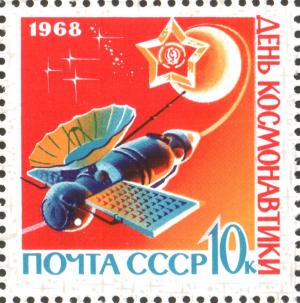Moon and Venus [1]
The beautiful “morning star” shines above the crescent Moon at dawn tomorrow. It’s not a star at all, though — it’s Venus, our nearest planetary neighbor. It shines so brightly in part because its surface is completely covered by clouds. They hide not only the surface, but the planet’s atmosphere as well. In fact, scientists got their first direct measurements of the atmosphere half a century ago.
Venera 4 was a Soviet spacecraft that arrived at Venus 50 years ago tonight. It dropped a probe into the atmosphere — the first craft to plumb the atmosphere of any planet other than Earth.
Venera’s parachute opened at an altitude of more than 30 miles. The probe’s instruments then transmitted readings for an hour and a half, until Venera reached an altitude of about 15 miles.
Because of the cloud cover, there was no consensus on what Venera 4 would find. Estimates of surface temperature and pressure, along with the atmosphere’s composition, varied wildly.
The probe put a lot of that uncertainty to rest. By the time it stopped working, atmospheric pressure was already more than 20 times the surface pressure on Earth, and temperatures had reached 530 degrees Fahrenheit. And Venera found that carbon dioxide made up more than 90 percent of the atmosphere.
Several later missions made it all the way to the surface, providing a more complete picture of Venus’s atmosphere — a hot, dense, toxic brew hiding beneath a beautiful blanket of clouds.
Script by Damond Benningfield


